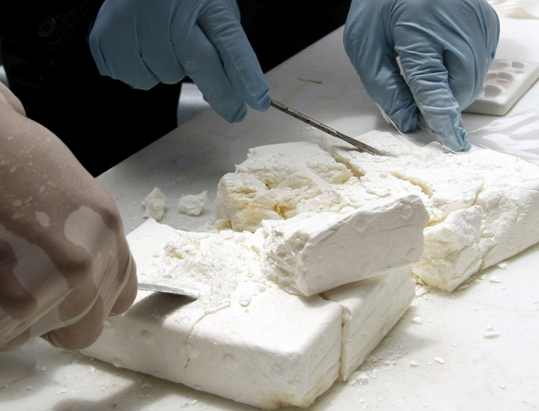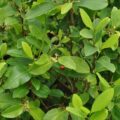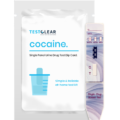What is Cocaine?
Cocaine is a highly addictive stimulant that directly affects the brain, it is one of the oldest known drugs. Cocaine acts by binding to the dopamine transporter, blocking the removal of dopamine from the synapse. Dopamine then accumulates in the synapse to produce an amplified signal to the receiving neurons. This is what causes the euphoria commonly experienced immediately after taking the drug.
The pure chemical, cocaine hydrochloride, has been an abused substance for more than 100 years, and coca leaves, the source of cocaine, have been ingested for thousands of years.
Pure cocaine was first extracted from the leaf of the Erythroxylon coca bush, which grows primarily in Peru and Bolivia, in the mid-19th century. In the early 1900s, it became the main stimulant drug used in most of the tonics/elixirs that were developed to treat a wide variety of illnesses. Today, cocaine is a Schedule II drug, meaning that it has high potential for abuse, but can be administered by a doctor for legitimate medical uses, such as a local anesthetic for some eye, ear, and throat surgeries.
There are basically two chemical forms of cocaine: the hydrochloride salt and the “freebase.” The hydrochloride salt, or powdered form of cocaine, dissolves in water and, when abused, can be taken intravenously (by vein) or intranasally (in the nose). Freebase refers to a compound that has not been neutralized by an acid to make the hydrochloride salt. The freebase form of cocaine is smokable.
Cocaine is generally sold on the street as a fine, white, crystalline powder, known as “coke,” “C,” “snow,” “flake,” or “blow.” Street dealers generally dilute it with such inert substances as cornstarch, talcum powder, and/or sugar, or with such active drugs as procaine (a chemically related local anesthetic) or with such other stimulants as amphetamines. Drug dealers have been known to cut cocaine with much more dangerous substances in an attempt to make the most profit. For example, it was discovered in 2005 that 2 percent of all the cocaine seized by the US Drug Enforcement Administration (DEA) was cut with levamisole, a cattle dewormer. This drug used to be used for humans infected with parasitic worms but was found to severely deplete white blood cells. By 2011, 73 percent of all the cocaine tested by the DEA contained levamisole.
List of substances Used to Cut Cocaine
A list of the chemicals, known as adulterants or cutting agents, used to dilute cocaine powder. Laboratory analysis was made on cocaine seized by police and customs officials in the UK.
|
ADULTERANTS USED IN COCAINE |
||||
| Adulterant | Legitimate use | Possible reason for use as adulterant | Samples found by HMRC (Customs) out of total of 214* | Samples found by UK police out of a total of 459* |
| Source: Serious Organised Crime Agency | ||||
| Benzocaine | Local anaesthetic used in creams, ointments and suntan lotions. Also reportedly used as a fish anaesthetic. | Similar anaesthetic properties to cocaine. | 2 | 271 |
| Boric acid | Used as an insecticide and as an antiseptic in medicinal and cosmetic products. Also used for weatherproofing and fireproofing fabric and timber. | May enhance anaesthetic effects of cocaine but believed to be added because it looks like cocaine crystals. | 0 | 33 |
| Caffeine | Mild stimulant used extensively in medicines and the food and drink industry. | Being a stimulant, it has some of the properties of amphetamine and cocaine. | 53 | 48 |
| Creatine (usually as monohydrate) | Naturally occurring compound found in the body. Used as a supplement by bodybuilders and freely available in health shops and gyms. | May simply be seen as easily accessible, with the right appearance. | 0 | 46 |
| Diltiazem (probably as hydrochloride salt) | Used in treatment of various heart conditions, including angina and high blood pressure. | Reason for addition not fully understood, but amounts generally believed to be small. | 28 | 52 |
| Dimethylterephthalate | Chemical used to make plastic films and sheets. | Present at low levels and previously thought by some to have ‘leeched’ out of packaging materials. Now thought to added deliberately but for what reason is not known. | 11 | 2 |
| Hydroxyzine (probably in dihydrochloride salt form) | Antihistamine that has also been used as a tranquiliser in veterinary medicine. | Reason for addition not fully understood. | 42 | 9 |
| Lignocaine, also known as lidocaine (probably as hydrochloride salt) | Local anaesthetic used mostly for surgery. Also used under medical supervision for the treatment of some heart disorders. | Looks like cocaine and has similar anaesthetic properties. Recently seen in some heroin samples, possibly because the same people are also supplying cocaine. | 18 | 78 |
| Mannitol (mannose) | Naturally occurring compound. Used in medicine as a diuretic and aid for testing kidneys. Used in the food industry as a free-flow agent, flavour enhancer and sweetener. | Originally associated with cocaine because its anti-caking properties helped to keep the drug as a powder. Now more likely to be seen in heroin, although the reason why is not clear. | 3 | 13 |
| Paracetamol | Painkiller, widely used. | Found occasionally in cocaine, but principally in heroin samples. | 3 | 8 |
| Phenacetin | Painkiller chemically related to paracetamol. No longer used in the UK because of its suspected cancer-causing properties. | Looks like cocaine. Recently seen in some heroin samples, possibly because the same people are also supplying cocaine. | 58 | 105 |
| Procaine (probably as hydrochloride salt) | Local anesthetic used in creams, ointments and suntan lotions. | Similar anaesthetic properties to cocaine. Less common now than it was a few years ago. | 22 | 14 |
| Sugars (lactose, glucose, dextrose) and related substances (sorbitol, inositol) | Widely used in medicines and the food and drink industry. Lactose in particular is used as a filler for many tablets. | Readily available. | Lactose – 9 Glucose – 3 |
Lactose – 27 Glucose – 11 Inositol – 3 Sorbitol – 1 |
| Tetramisole hydrochloride | Used to treat worms and parasitic infestations in animals. Has had trials for the treatment of certain cancers. | Reason for addition not fully understood. Seems to be present in relatively small quantities. | 94 | 133 |
| Other adulterants | N/A | N/A | Sodium bicarbonate – 15 Sodium chloride – 10 Benzoic Acid – 1 |
Potassium hydrogen tartrate – 6 Sodium chloride – 5 |
Short-Term Effects of Cocaine
Short-term health effects of cocaine include:
- extreme happiness and energy
- mental alertness
- hypersensitivity to sight, sound, and touch
- irritability
- paranoia—extreme and unreasonable distrust of others
Some people find that cocaine helps them perform simple physical and mental tasks more quickly, although others experience the opposite effect. Large amounts of cocaine can lead to bizarre, unpredictable, and violent behavior.
Cocaine’s effects appear almost immediately and disappear within a few minutes to an hour. How long the effects last and how intense they are depend on the method of use. Injecting or smoking cocaine produces a quicker and stronger but shorter-lasting high than snorting. The high from snorting cocaine may last 15 to 30 minutes. The high from smoking may last 5 to 10 minutes.
What are the other health effects of cocaine use?
Other health effects of cocaine use include:
- constricted blood vessels
- dilated pupils
- nausea
- raised body temperature and blood pressure
- fast or irregular heartbeat
- tremors and muscle twitches
- restlessness
Long-Term Effects
Some long-term health effects of cocaine depend on the method of use and include the following:
- snorting: loss of smell, nosebleeds, frequent runny nose, and problems with swallowing
- smoking: cough, asthma, respiratory distress, and higher risk of infections like pneumonia
- consuming by mouth: severe bowel decay from reduced blood flow
- needle injection: higher risk for contracting HIV, hepatitis C, and other bloodborne diseases, skin or soft tissue infections, as well as scarring or collapsed veins
However, even people involved with non-needle cocaine use place themselves at a risk for HIV because cocaine impairs judgment, which can lead to risky sexual behavior with infected partners (see “Cocaine, HIV, and Hepatitis” textbox).





